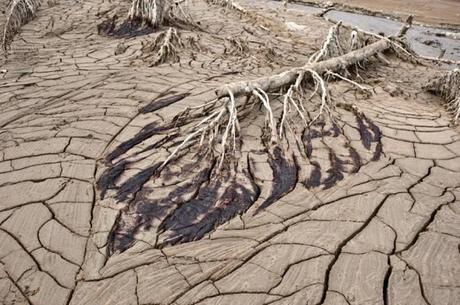
Trees in Hazeltine Creek after the Mount Polley tailings spill
from Cascadia Watch
Castle Rock, Occupied Cowlitz Territory – On May 18, 1980, Mt. St. Helens, or Lawetlat’la, erupted with the force of a hydrogen bomb. A cubic mile of ash and debris turned 230 square miles of land into a moonscape. The Toutle River was filled with boiling mud along its entire length, killing everything in the river.
But thirty-four years later, life flourishes near the mountain. The Toutle River has one of the best salmon runs on the U.S. west coast. The forest has returned, roots sinking deep in the ash throughout most of the Blast Zone.
A month ago, on August 4, 2014, another disaster struck: a tailings dam at the Mt. Polley gold and copper mine in British Columbia broke, dumping 1.3 billion gallons of mining waste into the headwaters of the Quesnel River. Arsenic, lead, cobalt, mercury, sulfur, copper, zinc, manganese, selenium, and other chemicals transformed creeks, lakes, rivers and forests intogray wastelands. A party of Secwepemc locals went to the spill and reported:
“Upon arriving, the stench of chemicals was overwhelming and caused instant nausea, the devastation was overwhelming. Plant life had been seared into the ground, burnt by the metals and chemicals in the tailings. Most upsetting of all was the sheer amount of animal tracks in and around the impacted area. Cougars, bears, moose, deer, birds, all had come searching for water, for the small creek they’d always known to be here. What they had found was death.”
Downstream on the Fraser River, people caught salmon with their skins peeling off. Locals suddenly had no drinking water. Thelocal tourism industry has collapsed. These waters, fish, and forests have been used by the local Secwepemc people for longer than Western civilization has existed. In an instant, it has been turned to poison.
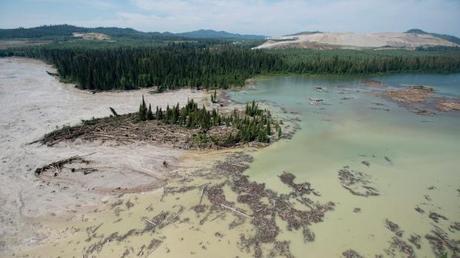
Former Hazeltine Creek and Quesnel Lake after the Mount Polley tailing dam breach
“I walked up to what was Hazeltine Creek and is now this canyon of toxic waste. It’s all shades of grey, there’s gray water coming down. It burns your eyes, it burns your sinuses and your lungs,” marine biologistAlexandra Morton told Vice News.
The contrast of these two disasters is stark. The Mt. St. Helens eruption and aftermath showed us the overwhelming power of nature, in all its destructive fury and all its power to heal. The Toutle River salmon run recovered in only a few years.
The Quesnel River salmon run, of 1 to 3 million salmon, might not recover for generations. Mount Polley, owned by Imperial Metals, was only the latest in a long history of mining accidents poisoning the region. This devastation amounts to chemical warfare against the land, the waters, and the people who live there.
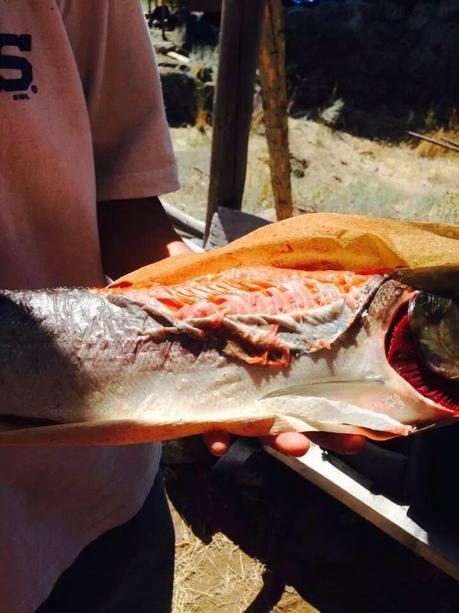
Salmon caught on the Fraser River shortly after the Mount Polley tailing dam breach
Goat Mountain stands at the edge of the blast zone, in Gifford Pinchot National Forest; its mature conifer forests border young 28-year-old forests. Ascot’s proposed 900-acre strip-mine encompasses a 128-year-old forest, a few years shy of old-growth status, and possible habitat for wolverines and spotted owls. The west side of Goat Mountain is within the Mt. St. Helens National Volcanic Monument, and its north side is a protected roadless area. Great elk herds live on and around the mountain, making this a popular hunting ground.Another Canadian mining company, Ascot Resources, isproposing to strip-mine Goat Mountain near Mt. St. Helens for gold and copper. The toxic waste from extraction would be stored in artificial lakes behind tailings dams like those at Mt. Polley, but these would be in a seismically active area. Every dam comes down eventually, making every tailings dam—especially any dam next to an active volcano—a time-bomb. Even before a dam failure, the combination of acid mine drainage and seismic instability will likely cause leaks via groundwater.
The mountain feeds the Cowlitz and Columbia Rivers, providing drinking water to thousands of southwest Washington residents. The watershed sustains world-famous salmon runs, protected under Native fishing rights. Tacoma also draws its drinking water from reservoirs downriver from Goat Mountain.
Lawetlat’la (Mt. St. Helens) and Goat Mountain are traditional Cowlitz Indian lands. In 2013, the U.S. Government recognized Lawetlat’la and surrounding areas as the Traditional Cultural Property of the Cowlitz Indian Tribe and the Confederated Bands of the Yakama Nation.
Ascot would like to begin exploratory drilling next summer. Proposed drill sites include protected riparian areas and the Green River Horse Camp, next to the Green River. In a strange double-standard, the U.S. Forest Service bans logging next to waterways, but is approving drilling and logging next to streams and rivers by a Canadian mining company.
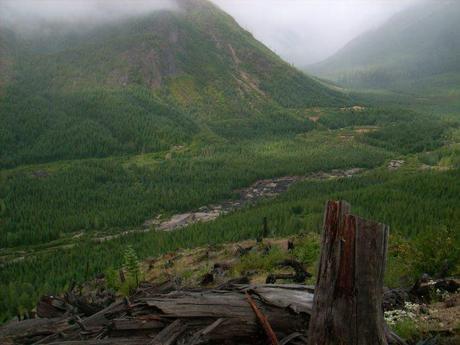
Goat Mountain and Green River Valley, edge of the Mt. St. Helens Blast Zone
Strip-mining Goat Mountain was first proposed in the 1970s. After the eruption a non-profit, the Trust for Public Land, bought the area and gave it to the U.S. Forest Service for conservation. However, the federal government has ignored the conservation mandate. Idaho General Mines made a proposal in 2005, and was defeated by local opposition. Ascot thinks another proposal can succeed now that people are more desperate for jobs.
Bill Carter, author of Boom, Bust, Boom: A Story about Copper, the Metal that Runs the World, told Common Ground:
“What happened at Mount Polley is indicative of the problem and a familiar, repetitious and ubiquitous story. Corporate executives arrive with the promise of hundreds of jobs starting at $75,000 a year, although only a fraction of these ever materialize…People with no attachment to community fly out every weekend, particularly when there are problems and the cleanup bill becomes due, as if real cleanup were affordable or possible.
“It’s inevitable…All that’s left when mines runs out is a toxic cocktail for people who had previously managed to get by for generations. I’ve been to lots of mining communities, but never a truly happy one.”
Biologist David Suzuki commented:
“Open ponds of toxic slurry aren’t the best way to manage mining waste. Although there’s no silver-bullet solution, and more research funding on alternative technologies is needed, smaller underground mines are finding safer ways to deal with waste by backfilling tailings. Drying tailings or turning them to a paste before containment are two other options. Safer solutions cost more, making them less popular with profit-focused corporations. But surely B.C.’s $8-billion mining industry can afford to pay more for public and environmental safety.
“The government allows the mining industry to choose the cheapest way to deal with waste, and companies often lack adequate insurance to cover cleanup costs when accidents happen. Imperial Metals admits its insurance will likely fall far short of what’s required to repair the damage at Mount Polley…the only way to ensure that toxic tailings are kept out of our precious waterways and pristine landscapes may be to avoid mining in some areas altogether.”
In Canada, indigenous peoples are fighting back. The Neskonlith Secwepemc First Nation evicted a proposed Imperial Metals mine in the region at Ruddock Creek, promising to blockade the site if Imperial Metals does not vacate. Tahltan First Nation elders have blockaded another proposed Imperial Metals gold and copper mine, Red Chris. The Gitdumden Wet’suwet’en Clan is blockading a new tailings dam at the Nanika Mountain molybdenum mine. The Secwepemc established a camp outside the Mount Polley site to monitor clean-up and speak with workers. Here is the first Secwepemc report on the disaster’s impacts.
Before and after the eruption, Mt. St. Helens has been a center of tourism and recreation. Today, the mountain receives over one million visitors each year. The Toutle, Cowlitz and Lower Columbia Rivers are world-famous for their salmon fishing. In southwest Washington, our livelihoods are based on logging, farming, tourism, recreation, fishing, hunting, and so on; we depend on healthy rivers and forests. No matter how bad things get, there is enough in nature to survive. Ascot and its allies are willing to destroy all that.
All of us who love this region, who love people in this region, have a responsibility to defend it. Let’s make it absolutely clear to the mining companies: these mountains will never fall to their dynamite.
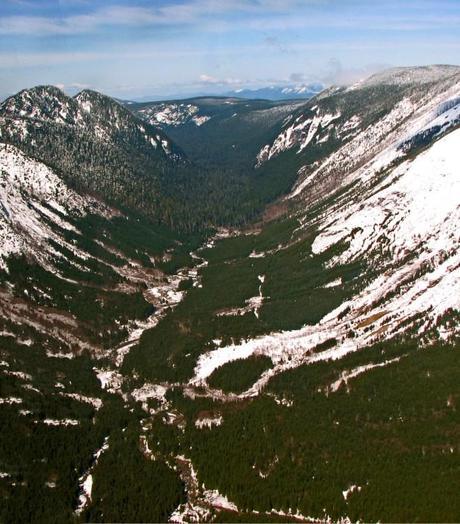
The Green River Valley

